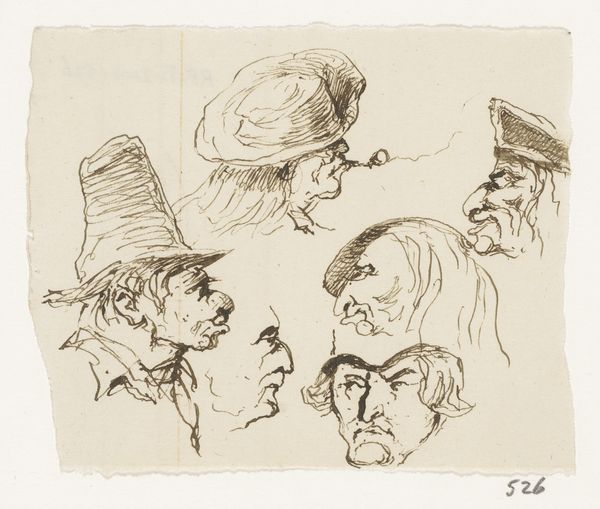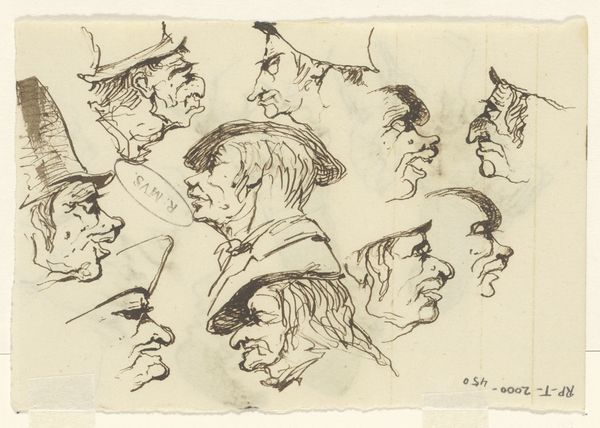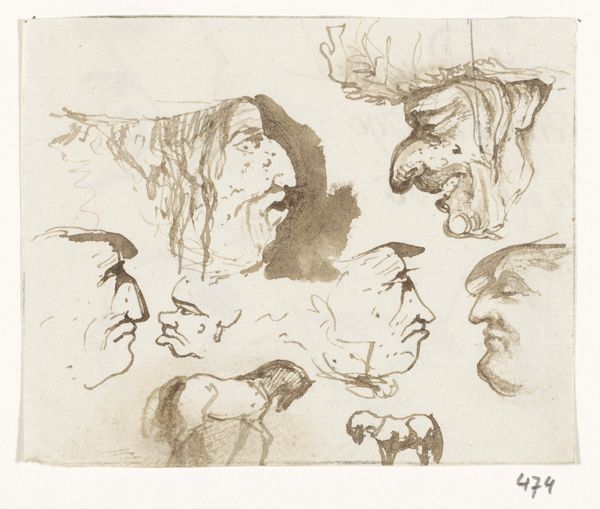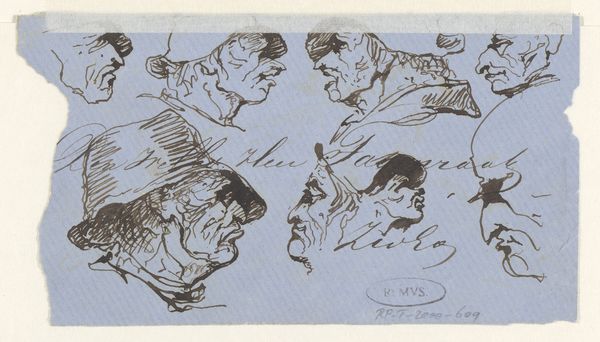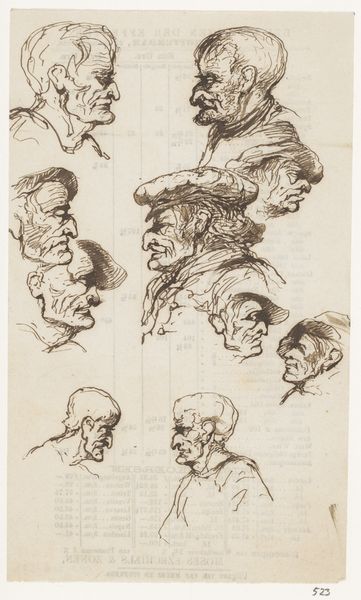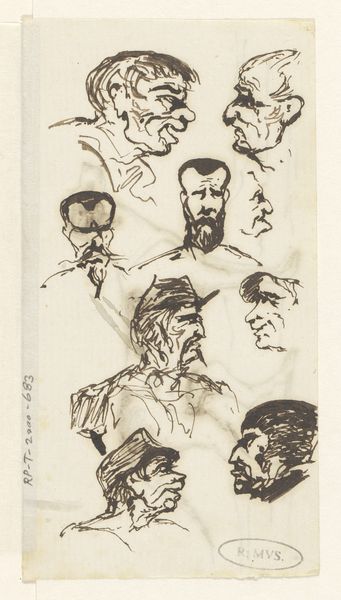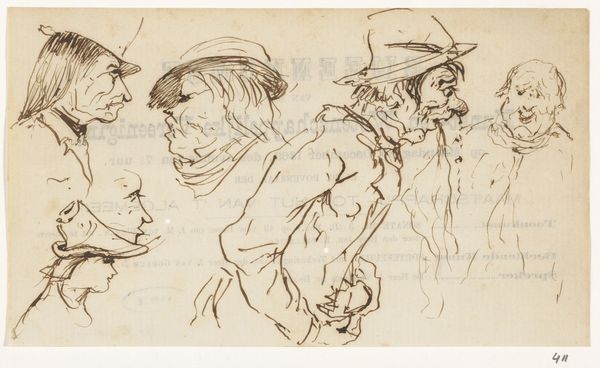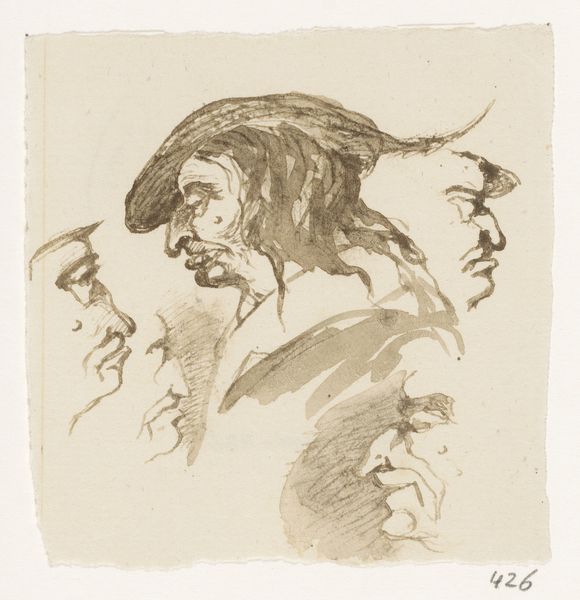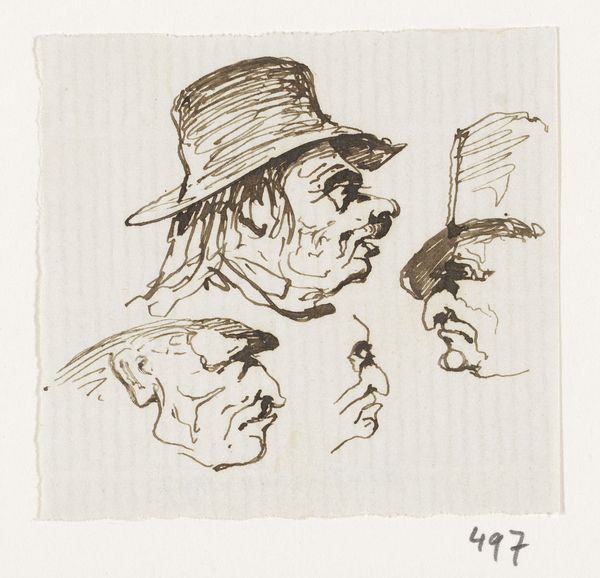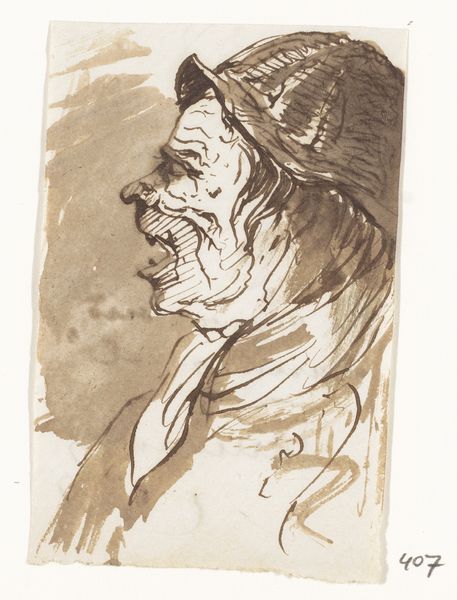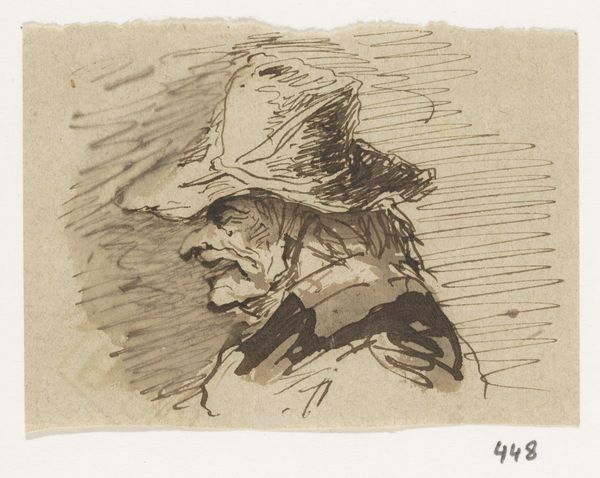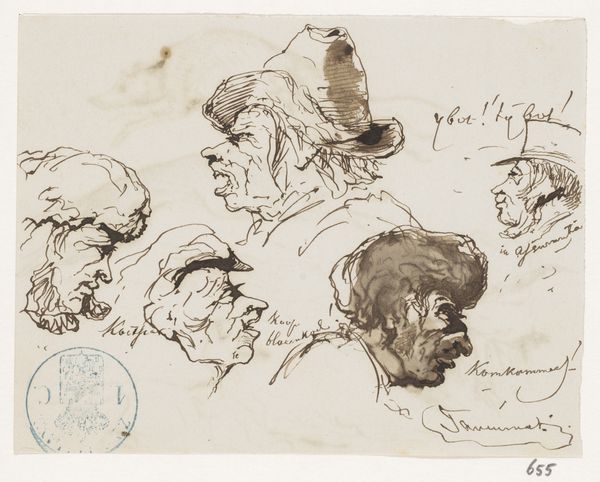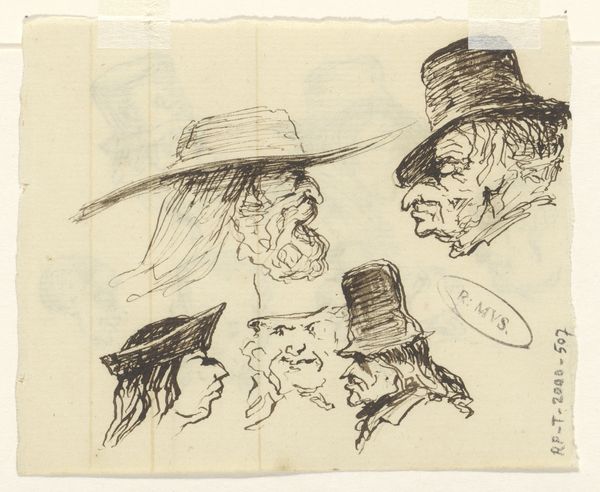
Dimensions: height 110 mm, width 140 mm
Copyright: Rijks Museum: Open Domain
Curator: Allow me to introduce Johannes Tavenraat's "Koppen," a drawing that likely dates somewhere between 1840 and 1880, currently held here at the Rijksmuseum. Editor: Immediately, I'm struck by the starkness of the lines and the whimsical nature of these sketched heads. They feel both humorous and a bit unsettling. Curator: It is an ink and pencil work. If we think about artistic practice in that era, sketchbooks like this were less about polished works and more about exploration of form, the casual rendering giving unique access to the creative process. There are visible pencil guidelines here and there, too. Editor: Absolutely, it is fascinating to look at. The hats they are wearing make me think of different occupations, almost stock characters from a play. There is a merchant, perhaps a soldier… the hats become instant signifiers. Curator: Consider the Romantic era's fascination with individuality and expression, alongside the rise of caricature as a popular form. Tavenraat's process points to both – mass production of social meaning using the graphic technologies available and distributed at the time. Editor: That’s a sharp point. Look at how the eyes are rendered, deeply shadowed in some figures and merely suggested in others. The psychological implications are interesting. Are these people to be feared or laughed at? The imagery itself carries so much societal baggage. Curator: Think also about access to materials; this is economical. Pen, ink, pencil, paper, quick, efficient… He is thinking and designing on the fly. It brings into sharp relief that even so-called spontaneous creativity has a deep history embedded in material constraints. Editor: Precisely, and the use of shading is remarkable. With so little ink, Tavenraat creates the illusion of depth, almost a sense of theatrical lighting falling across these faces. We impose meaning upon them, drawn from centuries of similar images. It feels like cultural memory made visible. Curator: The beauty of accessing process, for me, is that it throws into relief those assumptions about the artwork’s cultural and material moment. Editor: Seeing how artistic decisions were made, and the symbolic history behind them. It makes for a much richer experience, doesn't it?
Comments
No comments
Be the first to comment and join the conversation on the ultimate creative platform.

